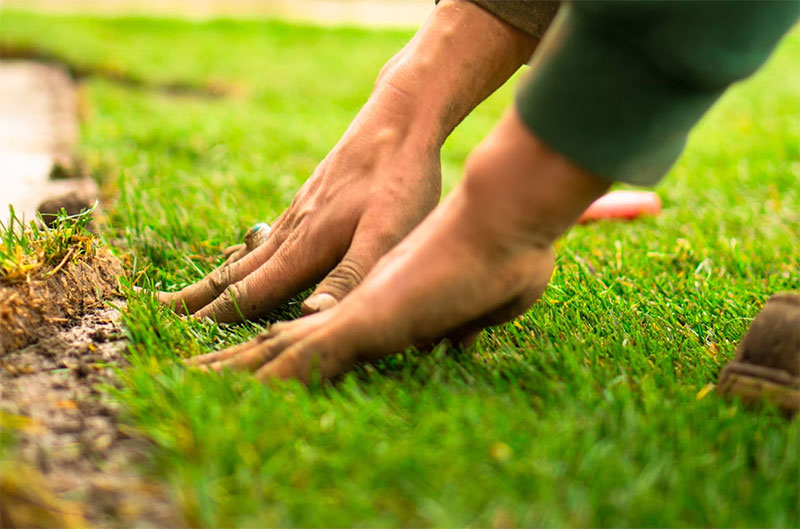Maintaining a clean and attractive landscape doesn’t require a large budget. With thoughtful planning, the right techniques, and a commitment to consistency, homeowners and property managers can enjoy an aesthetically pleasing outdoor space year-round without overspending. A well-kept yard not only increases property value but also creates a more welcoming environment for guests and family. By focusing on efficient, cost-saving strategies, even modest budgets can go a long way toward maintaining a healthy and tidy landscape.
Prioritize Native and Drought-Tolerant Plants
Native and drought-resistant plants offer a powerful advantage when trying to keep landscaping affordable. Because they’re naturally suited to the local climate and soil, these plants require significantly less water, fertilizer, and maintenance than non-native species. Once established, many native varieties are hardy enough to thrive with little intervention.
For instance, desert-adapted species like red yucca, desert marigold, or agave flourish in arid climates and still deliver visual appeal. They resist pests and diseases better, reducing the need for chemical treatments. As an added benefit, native plants often support local pollinators like bees and butterflies, which helps your garden maintain a healthy ecosystem.
Choosing these plants at the beginning of a landscaping project prevents costly changes or replacements down the line. While they may sometimes carry a higher upfront cost at the nursery, their long-term savings in maintenance and resources easily offset the initial expense.
Use Preventive Weed Management
Few things can disrupt a clean landscape as quickly as an unchecked weed infestation. Weeds compete for nutrients, water, and sunlight, crowding out desirable plants and diminishing curb appeal. Removing them after they’ve taken hold is labor-intensive and expensive. That’s why preventive weed control is a far more cost-effective solution.
Using pre-emergent herbicides at key times of year—typically early spring and fall—can halt weeds before they break through the surface. This approach saves hours of manual labor and reduces the need for repeated chemical treatments. Spot-treating areas prone to infestation also limits spread without overusing the product. For expansive Arizona properties or areas that require more precision, Northern Arizona Weed Control experts can deliver targeted, customized treatment plans. Their expertise ensures herbicides are applied properly and in the right quantities, saving money while maximizing effectiveness.
Invest in Mulch and Ground Covers
Ground covers and mulch are not just cosmetic—they’re practical tools in reducing maintenance costs. Mulch serves as a natural insulator for your soil, helping to retain moisture, regulate temperature, and prevent weeds. This means you water less frequently and spend less time battling invasive plants.
Organic mulch such as shredded bark, pine straw, or even grass clippings can often be sourced affordably or even for free. Over time, as it decomposes, it enriches the soil with valuable nutrients. This improves plant health and reduces the need for additional fertilizers.
Ground covers, meanwhile, can provide a living solution. Options like creeping thyme, woolly yarrow, or blue star creeper spread across the soil, protecting it from erosion and weed growth.
Practice Smart Irrigation
Water is one of the largest recurring expenses in landscape maintenance, especially in hot or dry climates. Inefficient watering habits waste resources and money. By investing in smart irrigation techniques, you can drastically reduce water bills while keeping plants healthy.
Drip irrigation systems are one of the most efficient methods, as they deliver water directly to the base of plants where it’s needed most. These systems minimize evaporation and runoff, and they’re relatively easy to install on a DIY basis. Drip lines can be customized to different plant zones, allowing for tailored watering based on plant needs.
Compost and Reuse Organic Waste
Composting is an underutilized, budget-friendly way to maintain a healthy landscape. Rather than hauling away leaves, twigs, and grass clippings, you can turn them into nutrient-rich compost that feeds your soil naturally. This eliminates the need for store-bought fertilizers while improving soil texture and fertility.
Even a simple backyard compost bin can handle the majority of landscape waste from most residential properties. When properly managed, compost can be ready to use within a few months and applied around trees, flower beds, or garden plants.
For those with larger spaces, a multi-bin compost system or a designated area for a compost pile can help manage and decompose waste efficiently.
Maintain Tools and Schedule Regular Upkeep
Many landscape issues—and associated costs—stem from neglect. A small patch of overgrowth or debris buildup can spiral into a larger project if left unattended. Regular upkeep doesn’t require a full-time gardener; it just takes a consistent schedule and a few reliable tools.
Creating a maintenance calendar for tasks like mowing, edging, pruning, and debris removal keeps your property looking neat and prevents larger problems. Staying ahead of seasonal changes helps you plan and budget effectively instead of reacting to sudden needs.
It’s equally important to keep your tools in top shape. Dull mower blades tear grass rather than cut it, leading to disease and uneven growth. Rusted or sticky pruners can damage branches and cause plant stress. Regular cleaning, sharpening, and oiling of tools prolong their lifespan and enhance efficiency, ultimately saving time and money in the long run.

Cost-effective landscaping isn’t about cutting corners—it’s about making smart choices that align with your goals and environment. By embracing native plants, staying ahead of weeds, using mulch wisely, and applying efficient watering strategies, you create a system that supports itself with minimal ongoing effort. Add composting and regular maintenance into the mix, and you’ll enjoy a clean, healthy landscape that thrives on a budget. Thoughtful planning and consistency go a long way, making cost-conscious landscaping both achievable and rewarding.




























